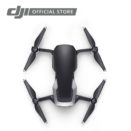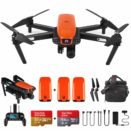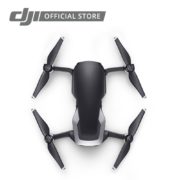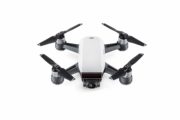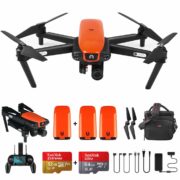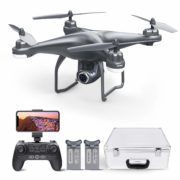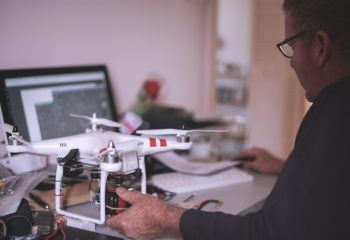Drone Buyers Guide
Drones have successfully penetrated the consumer electronics industry and are now taking the market by storm. From a seemingly inaccessible technology, reserved only for the military and supreme enthusiasts, the unmanned aircraft is now a multi-billion dollar industry.
Drones are widely available in a broad price spectrum. But you have a million options which makes choosing difficult. This guide aims to usher you to the wonderful world of drones and hopefully help you make wise decisions—whether you’re buying your first toy drone or your next ARF.
What is a Drone?
People call it by its many names: quadcopters, unmanned aerial vehicles (UAV), and multirotor to name a few. These helicopter-like electronics have numerous practical and creative applications (e.g., agriculture, search and rescue, weather forecasting, filmmaking) and are also cool devices to play with.
These flying gadgets started as military machines, stealthily hovering thousands of feet above the ground and delivering a bird’s eye view of all that lies below. While it remains a sophisticated technology, untapped by the masses, modern-day drones are quickly being adopted for mainstream use.
One of the most popular applications of drones is photography and videography. That’s how drones earned the moniker, “tripod in the sky.” The desire to create Instagram-worthy photos is a strong motivator that drove many into the UAV hobby. Drones appeal to individuals and hobbyists who are interested in instant documentation of their experiences.
The Anatomy of a Drone
The drone is a complex device with many parts and pieces. Whether you plan to build a DIY drone or fly a pre-built one, it’s important to know how your drone works by familiarizing yourself with its standard components. A typical quadcopter is made of the following components:
Frame – the frame or shell encases your drone. They are made of lightweight materials like metal, carbon fiber, plastic, and wood.
Motors – almost all latest drones have brushless motors because they offer more efficient performance than their brushed counterparts. A typical quadcopter will need four motors. The motor is a crucial part of the drone because it provides the power to fly the device.
Propellers – these units are similar to the blades of a fan–they are responsible for the direction and motion of the drone. There are usually two sets of propellers: the standard propellers at the front and the pusher propellers at the back, which are responsible for the forward and backward thrust during flight.
Body – this is the core of your drone where rotors, landing gear, and computer controls are attached. Many models are not waterproof so it’s important not to get the main body wet, as it can damage the drone’s internal components.
Batteries – you need batteries to power the drone. Li-Po batteries are the most commonly used power source for quadcopters. Know the capacity of your batteries. A bigger battery doesn’t mean your drone will fly longer.
Landing gear – not all drones require a landing gear. This component lets the drone land safely on the ground without anything hitting the body and the rotors.
Flight controller – the flight controller handles all the demands issued to the drone by the pilot. It is basically the motherboard or the “brain” of the quadcopter. It calculates how fast the motor should spin and handles varying pressures and strains to keep the flight stable.
Radio control system – the radio transmitter and receiver allows you to control the drone. The transmitter is the one you hold in your hand, while the receiver is placed inside the drone. The required number of channels to control a drone is a minimum of 4.
Electronic speed controller (ESC) – brushless motors require an ESC. This unit interprets signals from the flight controller. They also control the amount of power delivered to the motors. The ESC is attached to the mainframe of the drone. While you don’t have to modify it in a fully constructed drone, some companies like DJI and Parrot allows customization through an SDK or Special Development Kit.
Types of Drones
Drones may be categorized based on their size, range, technology type, level of autonomy, and many others. For this guide, we will discuss the three popular types you may come across when buying consumer drones, which is based on the equipment you will get from a kit.
Ready to Fly (RTF)
RTF drones are recommended for beginners or those who haven’t flown a drone before. These models don’t require any complex assembly, but you may need to do some initial configuration including charging the batteries, attaching the rotor blades, and binding the drone to the handset. Unlike other types of drone kits, RTFs are sold with controllers to get you flying fast. Other kits may come with cash kits and FPV (first-person view) gears.
Bind N Fly (BNF)
Like RTF, this is a fully-constructed drone. The only difference is the lack of controller. You can use an old controller, provided they are compatible or buy an alternative if needed. This may be ideal for someone who has flown a drone before.
Almost Ready to Fly (ARF)
These kits are aimed at existing drone users. You wouldn’t receive your gadget in one piece and the manufacturer will most likely leave out the controller and other components. The drone requires assembling, but also allows a fair amount of customization, which is perfect for DIY enthusiasts.
How to Choose the Right Drone For You
Choosing the right drone depends on your budget and experience. Some drones require previous flying experience, others can fly on its own without user input and control. Here are the five things to consider when buying a drone.
Consider your skill level.
It is best to buy an affordable drone if you are a beginner and still learning how to fly. If you have a bit of experience and want to upgrade your gear, then it will depend on what you want to do with your drone.
Some of the things you can do with your drone:
- Create professional-looking videos and photos
- Race with other drone owners
- Take a dronie (drone selfie)
- Examine property damages
- Explore fascinating places
- Family fun occasions
Consider the flying regulations and restrictions in your area.
The US Federal Aviation Administration (FAA) requires registration for anyone flying a drone for recreational purposes. However, it is only for drones weighing more than 250 grams and less than 25 kilograms. A more rigorous and lengthy registration process awaits professional drone users. Check the FAA website for more information.
Cheaper drones don’t have drool-worthy features.
The drones you can use to shoot high-res photos and videos are obviously expensive. Even entry-level drones may come equipped with a camera. But for less than $100, don’t expect a cinematic sunset shot from it. Models with a decent camera at 4000 x 3000 resolution starts at around $300.
Expect crashes and accidents.
Flying a drone for the first time? You just have to accept the fact that you will experience a lot of mishaps and your first drone will take a beating. Hence, your budget should include repairs and replacing damaged components. Aside from crashes, drone flyaways are pretty common, especially in a windy setting.
There are certain features that are worth the extra cash
While it’s best to buy a drone that accommodates your skill level, there are some upgrades that can improve stability and navigation, which are actually helpful for beginners:
- Return to Home button – allows the drone to fly itself back to you
- Follow Me mode – the drone automatically follow you or another target
- Gimbal – reduces camera shake and keeps your footage fluid and smooth
Drone Frequently Asked Questions
Q: How far can a drone fly?
A: The drone range varies. Long-ranged drones like DJI Mavic 2 Pro has a fly range of up to 8 km. Ranges go from 50 to 100 meters for beginner drones.
Q: How do I know where it is not allowed to fly a drone?
A: In the US, the Federal Aviation Authority (FAA) is in charge of all flight issues and licenses. Check the customer help section on their website for more information. Alternatively, you can use apps like Hover and B4Ufly to know where you are allowed to fly.
Q: Do I need a license to fly a drone for fun?
A: You don’t need a pilot certification if you’re flying a drone for recreational purposes. But you do need to register your drone with the government if it weighs between 0.55 pounds and 55 pounds. You will receive an F number after registration that has to be attached to all your drones.
Q: What happens if I sell my drone after registration?
A: You should update your info on the FAA website. Remove the registration markings from your drone and accomplished a signed bill of sale.
Q: What is the difference between a drone and a quadcopter?
A: Drone refers to all unmanned aerial vehicles. A quadcopter is a specific type of drone controlled by four rotors. Most consumer drones used for recreation and hobby are quadcopters.
